-
Posts
19,773 -
Joined
Content Type
Forums
Detector Prospector Home
Detector Database
Downloads
Posts posted by Steve Herschbach
-
-
I had somebody ask me to test a couple gold nuggets on my Nokta Impact - preferably a 1 gram nugget and a 2 gram nugget. The person wanted to know the VDI number for each in the DI2 mode and Deep mode.
This by accident may be very informative possibly for people who do not know exactly how VDI numbers are generated. The short story is they are a combination of the target conductivity and the size of the target. In other words, silver is more conductive than lead, so two identical items, one made of lead and the other silver, the silver item will have a much higher VDI number.
For two items made of silver (or lead, gold, whatever) where one item is larger than the other, the larger item will generally have higher VDI numbers.
The Nokta Impact is unique as far as I know in that it has two different target id (VDI) number scales that are used in the various modes. The Impact VDI scale runs from 0 - 99 but as I said there are two different ways the scale is divided. One set of modes uses 0 - 15 as ferrous, all else non-ferrous. The other modes use 0 - 40 as ferrous, all else non-ferrous, expanding the ferrous range.
I did not want to sort nuggets all night so came up with a 0.90 gram nugget and a 2.03 gram nugget, both from the same Nevada location, and both of similar shape although one is obviously larger than the other. Here are the results...
The 0.90 gram nugget using the DI2 0 - 15 equals ferrous scale has a VDI number of 37. The same nugget in the Deep 0 - 40 equals ferrous scale reads 63.
The 2.03 gram nugget using the DI2 0 - 15 equals ferrous scale has a VDI number of 32. The same nugget in the Deep 0 - 40 equals ferrous scale reads 56.
Here we have a smaller gold item giving a higher VDI number than a larger gold item. How do we explain these results?
Gold nuggets are not pure gold. These nuggets are probably around 85% - 90% gold. The rest is mostly silver. Here is a strange fact. Silver is more conductive than gold. You would think adding silver to gold would raise the VDI number. However, reality is pure metals conduct electricity better than alloys, and so adding silver to gold actually lowers the conductivity and therefore the VDI numbers. In this case the size, shape, and most importantly, alloy composition of the larger nugget is causing it to read lower than the smaller nugget.
This is a great example of why if you are looking for gold nuggets you at a minimum dig all non-ferrous targets. And because weak nugget signals (very small nuggets or large nuggets deep) in mineralized ground can read as ferrous, the only truly safe approach is to dig everything.
Here is a photo of a large variety of gold nuggets and some coins I tested with the White's DFX, which uses the same -95 to 95 scale as many White's detectors. Again, you can see that size and VDI numbers do not correlate due to shape and purity differences. In general the paler gold has higher silver content. Click on photo for larger version.
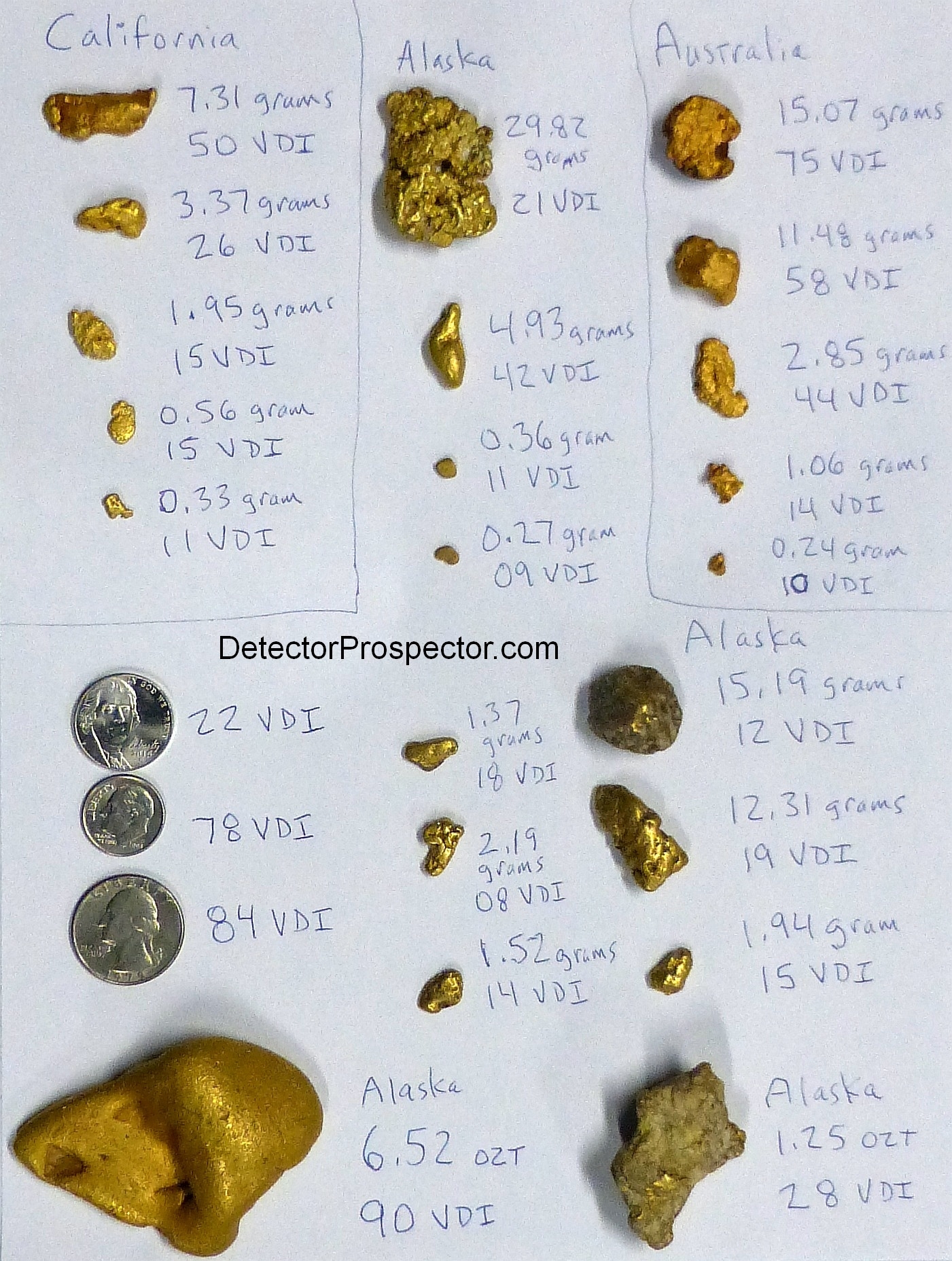
-
Very nice photos - thanks for posting!
I have several metal detectors that can find much of the gold you are showing. The 71 kHz Gold Bug 2, 48 kHz White's GMT, 56 kHz Makro Gold Racer, and 45 kHz Minelab Gold Monster can all hit pieces weighing less than 1 grain (480 grains per Troy ounce). One grain is 0.065 gram. The safe choice proven around the world for decades is the Gold Bug 2 with 6" coil.
The catch is that to hit a 1 grain nugget (flake) you have to be right on it, like just a centimeter or maybe two a the most for depth. And sadly, loose accumulations do not enhance the signal. If you had a lot of small pieces packed tightly, literally touching, in a small pocket or crevice, that MIGHT help a little with the signal. Do not count on that at all however because it is very unlikely. The reason for this is explained here.
While in theory a metal detector can find the type of gold you are talking about it generally is not the best way to find very small gold. You have to be quite expert with the device. If money was no object I would say just go for it, but you have indicated money is a concern. I would be misleading you to tell you that the money spent on a detector would allow you to do more than pay for the batteries you put in it, if that.
I am not trying to be negative about this at all, just realistic based on my own personal use of detectors like this. My specialty personally in Alaska was finding very tiny bits of gold and I am quite experienced at it.
Here are some articles that might help illustrate what is possible....
Detecting Small Gold at Crow Creek May 30, 1999
-
My advice is to stay with a gold pan and sluice box. Those are the best methods for gold that small. If you are not finding gold with those methods a metal detector will not make it appear. I would work hard at trying to find better locations where you can find gold with what you have before investing more money in a detector. If you know somebody who uses a detector successfully in your area who might give you guidance, then a detector might be worth your investment.
-
Right now though for just $50 more those wireless headphones are worth it. Very nice cushy set.
The VX3 has the same board in it as the V3i so if we can just figure out the hack to turn it back into a V3i....
-
All links double checked and working - must be a poor connection issue.
-
I am sure somebody will jump in with some suggest Oz settings once everyone wakes up down under! The go to timing for mineralized ground with the GPX 4500 is Enhance, though this is best when paired up with a mono coil. From Jonathan Porter at Link deleted since Findmall Forum update broke all old links
"Monoloop coils will always provide a sensitivity and depth advantage over a DD coil, reason being a DD coil has two windings which cross each other down the length of the coil from front to back, the proximity of these two windings allows the coil to be used in high mineralisation as well as providing simplistic discrimination. However the trade off from going from say an 11' mono to an 11" DD is approx 30% in depth. DD coils do have pretty good sensitivity for their size because the smaller a winding (loop of wire inside the coil) the greater the amount of turns of wire to get the inductance right in the coil, more windings equals greater near coil sensitivity to small targets which goes some way in reducing the performance reduction of the second winding.
Minelab prospecting detectors are very good at ignoring mineralisation even with the more powerful timings such as Normal or Sensitive extra in combination with Monoloop coils, however they too will react to ground minerals and when this happens gold can be masked by the mineralisation noise just like a VLF detector. To help compensate for this Minelab developed the "Smooth" class of timings of which your GPX-4500 has two, Sensitive Smooth and Enhance. These timings allow an operator to work in extremely mineralised ground without the effects of ground noise or minimal effects especially compared to the other timings. On some targets there is near Zero depth reduction when using the Smooth type timings and on others up to 20% but across the board much better than going to a DD coil and getting a reduction like 30%! Of the two Smooth class timings Enhance is better for outright depth on the majority of targets whilst still ignoring mineralisation."
-
Yeah, it's too bad they did not incorporate the audio iron grunt into the SGT. Same problem with GMZ - no iron disc. The SGT with iron disc would have headed the Minelab Gold Monster off at the pass. I would guess there is a standard GMT board in the SGT and the feature was just not implemented but a person might be able to hack it directly on the circuit board, maybe by wiring a switch.
-
Welcome to the forum!
Do I give you a fish, or teach you how to fish?
Settings are different for different ground conditions. They also vary with the skill of the operator. What coil is being used matters. The goal is to learn how your detector operates in order to learn how to set it for different conditions.
Imagine you just got a new car with a manual transmission, and ask on the Internet for some settings. Should you use second gear and 3/4 throttle? Or third gear and 1/2 throttle?
The answer is questions - are you on dirt road or paved road? Are you going uphilll or downhill? What's the speed limit? How good a driver are you?
The problem is no matter the settings arrived at, they change when the conditions change. You car setting going up the hill may have to change as soon as you go over the top and are now headed down the hill.
You can no more properly use a detector everywhere with a single batch of settings than drive that car everywhere with only one combination of gear and throttle settings. Sure, you could just put it in first and drive everywhere going ten miles an hour, but that would be very inefficient. You should be adjusting you detector to be more aggressive for mild conditions and less aggressive in difficult conditions.
You can find the full GPX Timing Charts Here. The master chart describes how to determine a best timing for a given location in the lower right corner. Click on chart for larger version.
BEST TIMING
- In new location, start in Normal Timing in middle of chart
- No ground noise, try next timing to the left on chart for more depth OR
- Too much ground noise, try next timing to right on chart for less noise
- In general, the best timing is the one farthest left on the chart that produces little or no ground noise
- Always ground balance when changing timings
When in doubt, do a Master Reset and use the Quick Start before proceeding as recommended above.
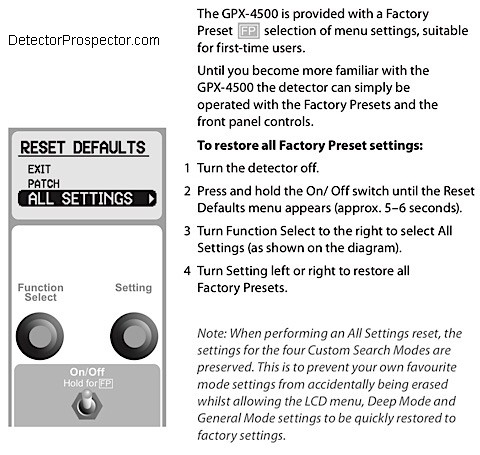
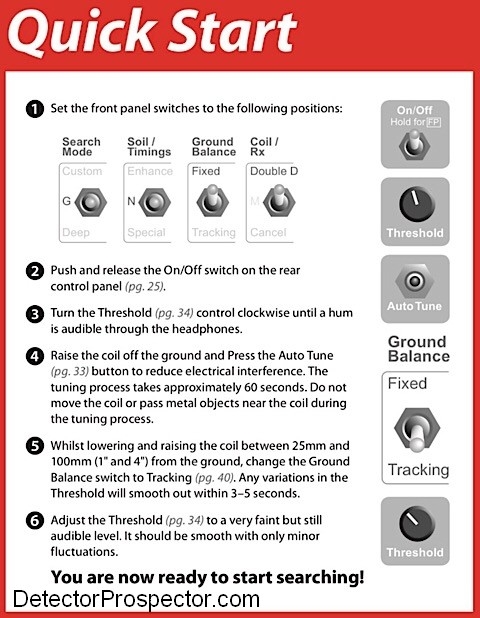
For some specific Australian settings Gold City Detecting has a nice article.
I hope this helps rather than confuses. Good luck!
-
There is a difference between touch/knock sensitivity and ground responses due to setting the manual sensitivity too high or improper ground balance. If the unit is not ground balancing properly it would be sounding off on the ground or hot rocks. This is not the same thing as a coil being touch sensitive. Part of the problem for Minelab is sorting out what people are really encountering.
-
43 minutes ago, tvanwho said:
I need to know how to anchor the dredge so the creek doesn't take it when I let go of the hose?
How long does it take for gold to settle down thru the gravels to bedrock after a flood, days, weeks, months, years?
How do I find the paystreak? I do have a waterproof Garrett AT Pro, dunno if that's a waste of time or not?
Do I just get to dredging a hole or is there a method to use? I don't want to dredge , then end up re-dredging my tailings.
I need to know how to anchor the dredge so the creek doesn't take it when I let go of the hose? Tie ropes from the dredge to whatever natural anchors are available, like boulders or trees.
How long does it take for gold to settle down thru the gravels to bedrock after a flood, days, weeks, months, years? Gold does not settle after floods. It settles during floods, then does relatively nothing until the next flood.
How do I find the paystreak? I do have a waterproof Garrett AT Pro, dunno if that's a waste of time or not? Use your dredge to dredge sample holes. Detectors are generally a waste of time for this - gold too small and too deep.
Do I just get to dredging a hole or is there a method to use? I don't want to dredge , then end up re-dredging my tailings. If a sample hole intersects a paystreak, drop back and take another sample hole, and then another, until the end of the paystreak is located. Then dredge from there upstream taking up the paystreak.
Almost all that advice applies to larger dredges. In my opinion a 2" dredge is a gas powered crevice cleaner and best used doing just that. If I have a 2" dredge I am not going to even fire it up unless I can see bedrock with my eyes.
You may want to invest in a book, Gold Dredgers Handbook by Dave McCracken
Here I am sniping bedrock with a 2" dredge back in the 1980's...
-
Thanks for posting Scott! Guess I need to put the Coiltek on my CTX and make a great find.
-
I almost could not keep from making the impulse purchase myself. I sure do not need anymore nugget detectors, but since White's has a two year transferable warranty a person could buy one of these, use it a year, and probably sell it for as much if not more than was paid for it!
-
White's Electronics just started their fall "Garage Sale" with a number of what I think are some incredible deals. As an ex-dealer I should know! The one people here may want to check out is the V3i packages at more than 1/3 off full list price. This is pretty close to dealer cost! If you check the Garage Sale link above you will also see the White's GMT at about 1/2 off plus other great deals.
-
Discover Magazine
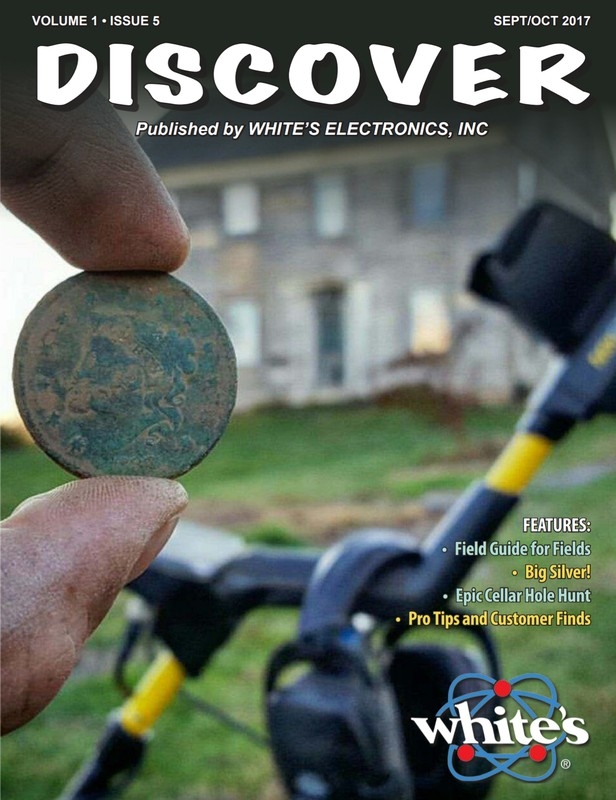
Some of you might remember a publication called "Discover" that White's Electronics used to publish. It featured customer finds, treasure stories, and all-around good info on metal detecting. Back in the 90's we stopped making it, much to the disappointment of some of our long-time customers.
Well... we realized missed it too! So we're proud to announce the re-introduction of Discover magazine. As a part of our mailing list you have exclusive access to a free digital copy, which you can read online, print out, and share as you see fit. Get your free copy here. We'll try and send one out every 2 months.
Thanks for supporting an American brand, and know that we will always have your back as a valued customer. This publication is just one small thing we can do to show our appreciation!
Discover Magazine September/October 2017
Discover Magazine July/August 2017
Discover Magazine May/June 2017
Discover Magazine March/April 2017
Discover Magazine January/February 2017
Sincerely,White's Electronics
-
White's Electronics just started their fall "Garage Sale" with a number of what I think are some incredible deals. As an ex-dealer I should know! The main one that caught my eye is the White's GMT package, new with full warranty, for less than normal dealer cost.
White's GMT Reg $799.95
6" Concentric Coil Reg $149.95
Digging Tool Reg $39.95
Backpack Reg $99.95Total Full Price $1089.80 On Sale for $450 TOO LATE, SOLD OUT!
I cannot see how anybody with even a thought of getting a GMT can get a better deal than this! If you check the Garage Sale link above you will also see the White's V3i at about 1/3 off plus other great deals.
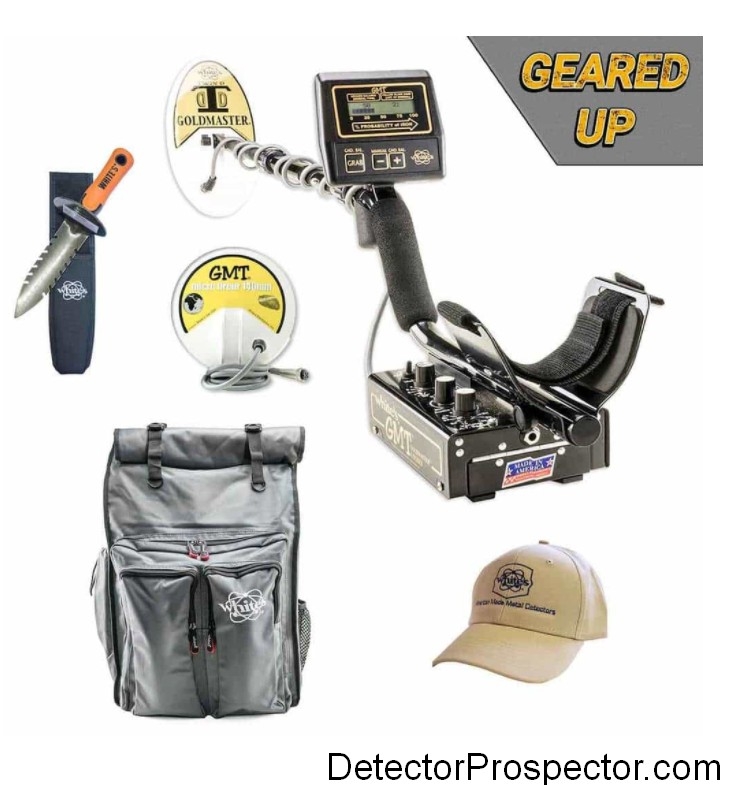
-
Looks like nobody here has used both? I have not.
-
Bill Southern's response from Minelab...
http://nuggetshooter.ipbhost.com/topic/30883-mike-c-falsing-fix/?page=2&tab=comments#comment-282546
"They are still working with the info coming in to see what can be done to lessen it, but it seems it is not all of the coils doing it large or small and if you have a coil issue contact them about it and they are always glad to help. If for some reason your coil is bad it will be replaced...."
Affixixing your cable properly on the lower rod is very important on hot detectors. Nothing crazy, just like I have in my photo above. Go straight up for at least the lower rod portion and leave just enough loop at the bottom to accommodate coil angle adjustments.
-
Very nice Steve. I do like that Gold Mask rod assembly a lot. It is very high quality, much better than what we get with a lot of detectors.
-
The CTX is a bit of a quandary when it comes to ferrous trash. All the Minelab BBS/FBS machines in my experience handle isolated ferrous trash better than any other machines. By that I mean they do not get fooled very much, especially on flat steel items like bottle caps or various flat rusted sheet steel items. These can be very troublesome items, especially for higher frequency machines and machines running DD coil. You get a really clean, coin signal, and dig a 2" square piece of flat rusted steel. Some detectors also have a real problem with broken square nails. Anyway, the BBS/FBS machines can really run clean and quiet in spread out ferrous and make good finds.
The problem is the BBS/FBS machines have a very slow recovery time and when you get multiple ferrous under the coil at one time they just go blind. Everyone kind of knows that, but when you see it personally, like I did in my test linked above, or with you and your buddy cross-checking, it can be a real eye-opener.
The Deus and machines like my Gold Racer or G2 and many other will do better in dense ferrous than the CTX and prior units. The CTX I like for its saltwater handling (superb beach detector) and that it also has what may be the most accurate discrimination system available. I am not impressed by the Deus in that regard or any of the Euro machines for that matter. They excel at pulling nonferrous from ferrous but when it comes to target ID they are just OK at best. For groomed parks and yards where you want every hole to count, a CTX is very hard to beat.
As you say Merton you just have to know your detectors and what they are good at, and match machines up for the situation as appropriate. And for sifting nonferrous out of a sea of ferrous the Deus is a fabulous detector. The CTX could be a life saver however in areas of more dispersed ferrous where there is a lot of roofing tin or decomposed broken up rusted cans. For a lot of people a CTX (or E-Trac) and a Deus would be a killer combo as each is strong where the other is weakest. Excellent complementary pair.
-
-
Definitely a person with a huge impact on the industry. Thanks for posting David.
Here is a brief video with Stu in the middle...
-
6 hours ago, Bhogg said:
not exactly the response I was after as it's not an actual fix to the issue but just replacing the entire machine.
There is only an issue to fix if every machine has the problem, and that does not appear to be the case. There is nothing to fix on my GM1000. What we are talking about then are some machines having an issue. My guess is rather than mess around Minelab wanted to get your entire unit back in order to help nail down what's going on. People are assuming it is a coil issue but that is not necessarily the case. There could be some other problem causing inherent instability.
Stuff happens. I see a lot of the new Deus HF elliptical coils are dead on arrival or have some other problem causing quite a few of them to have to be returned. And that is after an exceptionally long delay to make sure there were no problems on release! It happens with all the companies and is the number one reason for not being an early adopter of any new item, and I am not just talking metal detectors.
I used to own a large powersports dealership and we had a large service department. We had some bad management at one point that got severe enough that I stepped in personally and ran the service dept for a couple years. I could tell countless stories about new product issues that make whatever happens with metal detectors look like nothing. Here is just one.
Johnson and Evinrude outboard motors were made by a company called OMC and in 1996 they came out with a new fuel injected lineup designated as FICHT outboards. This was an exciting new product with good fuel efficiency at the time, and we jumped on the bandwagon and sold a bunch of them.
Then the 150HP units started blowing up. A piston would typically undergo severe detonation and literally blow a hole in the side of the powerhead. The only real solution was to replace the entire powerhead. A lot of these were installed as dual outboards on charter boats. Soon the trickle became a flood. Charter operators as a rule always want a commercial discount, and then they also want overnight service because they are losing money every day the boat is down. Now these are people who have real problems with new product that is costing them a small fortune and they are angry - and the person across the counter from them typically takes the brunt of their ire. I have had people nose to nose with me screaming in my face about their problems. I got very good at handling that stuff but it is stressful.
Not only did the motors blow up, but after we put a new powerhead on, they would run a while and blow up again. We had stacks of powerheads and for some time that seemed to be all we were doing.
Now OMC of course has engineers going crazy trying to figure out what is going on. The problem was not occurring at all or nearly as much at other locations. We seemed to be ground zero for the problem. OMC finally had to send engineers to Alaska to go out and run the motors and monitor what was going on to get to the root of the problem.
These were very high performance motors and akey to that performance was the onboard computer or "brain box" that collected information from numerous sensors and tweaked the fuel injection parameters on the fly to get the best horsepower and fuel efficiency under various conditions. Just like new metal detectors, these things are basically running a computer program to operate. It was finally determined that at certain RPMs and certain water and air temperatures things went wrong. It was related mostly to colder operation and so we were having huge issues while dealers in Florida were having none. When they develop the motors and test run them - guess where? Not Alaska! no, they were debugged in warm climates but the program failed in colder climates. The motors under the right conditions would lean out, detonation would occur, and catastrophic failure.
This took most of the summer to figure out and not only cost our company a lot of time and money (no, manufacturers do not compensate dealers for all their incurred costs when these things happen) but eventually I believe it was what bankrupted OMC in 2000. In 2001 what was left of the outboard motor division was purchased by the Bombardier corporation of Canada.
I saw similar instances over the years with everything. Polaris ATVs, Honda generators, Volvo Penta inboard motors, Ski-Doo snowmobiles, etc. We sold lots of stuff by many top name brands and they all fell victim to this at some time or another the pattern is always the same. It was always brand new product. And the problems increased exponentially with the introduction of high tech products that have lots of sensors feeding information to onboard computers that in turn are actually running the show. Back in the old days all a motor needed was fuel, compression, and spark to run, and anybody with some basic knowledge and tools could fix them. Now you can't even look at a motor without first hooking it up to a computer and large numbers of motor failures are simply sensor failures.
Long story short - never buy anything new in the first year of production unless you have a tolerance for this sort of thing. I don't care what the product is or who makes it. The only thing you can count on is the more complex the product, the more likely there will be first year issues to sort out.
-
Well, you really can't say the Impact is the wrong machine for Mike. It runs at up to 20 khz and Mike has stated it handles his ground well without overloading or needing to reduce gain, etc. I guess that being the case I am puzzled over what all the fuss is about. If the Impact is the machine for Mike, great. My hope is he goes out, finds gold with it, and shares information about how he did it. I have been that guy doing it first and passing information onto others for ages. It has never bothered me being the only guy using something, in fact I enjoy it. That is why I have always been game to try new machines and give an underdog a chance. I love competition as I think it is the best way for good machines to eventually reach our hands. That's why I have gone out of my way over the years to maintain ties to all brands. I personally think brand name loyalty is counterproductive. We should all be open to new things and that includes new brands and models. No matter what though there will be early adopters and that can be a lonely road sometimes, as Mike is discovering.
Here is where most of the Nokta Impact people are hiding Link deleted since Findmall Forum update broke all old links
-
Mike, I was using a Nokta detector before you ever heard of the brand, and have certainly found more gold with Nokta detectors than you have. I have done vastly more to promote the company and its products than you could ever dream of doing. The fact is nobody on any forums anywhere are talking much about the Impact for prospecting. Why? Because it is a new model that few people own, and 99% of those are coin and relic people. So if you want to think it is a grand conspiracy and that I am somehow suppressing talk of the Impact on this forum you are way, way off base.


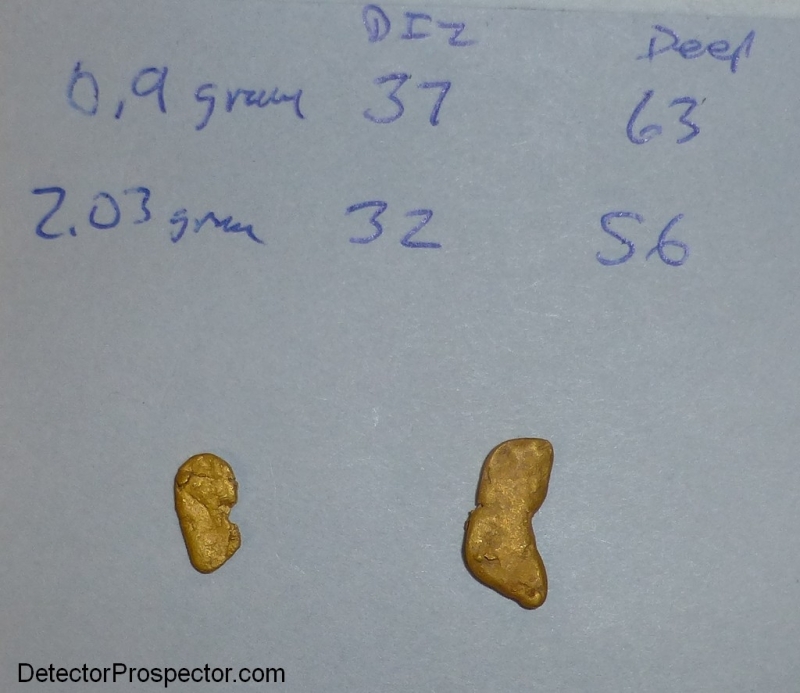
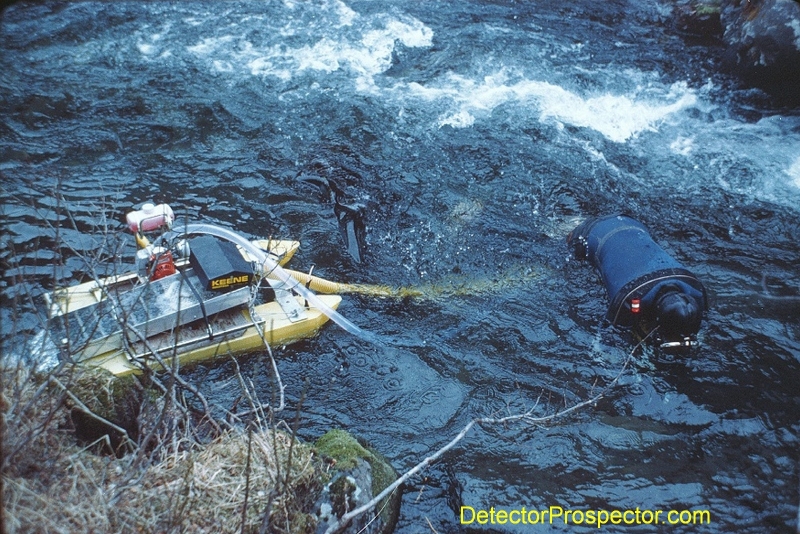


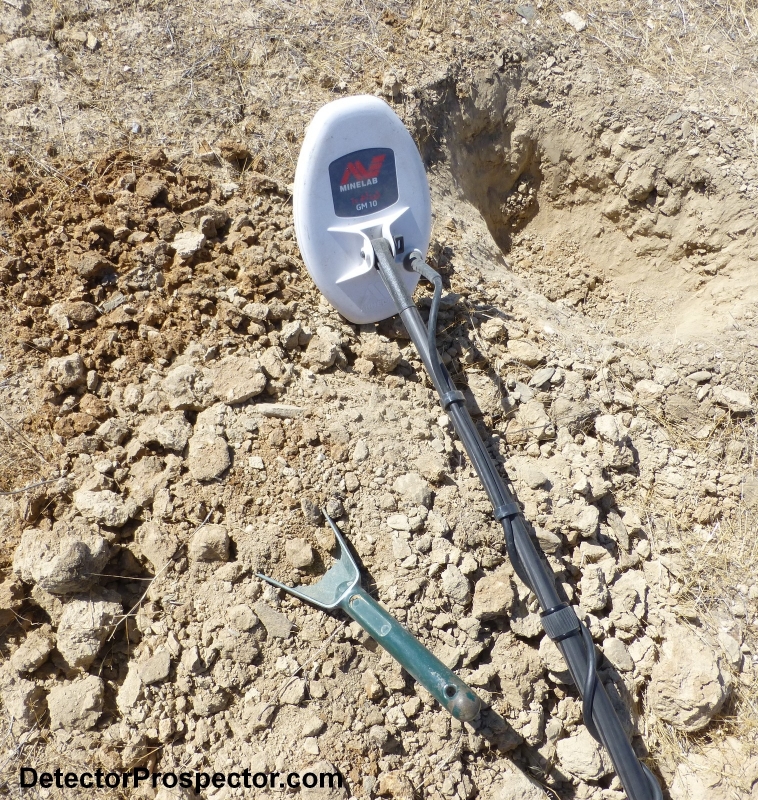
Gold Monster In Arizona?
in Minelab Metal Detectors
Posted
Welcome to the forum! No, I do not get down to Arizona often. Lots of discussion of Gold Monster use in Arizona on Bill Southern's Forum.